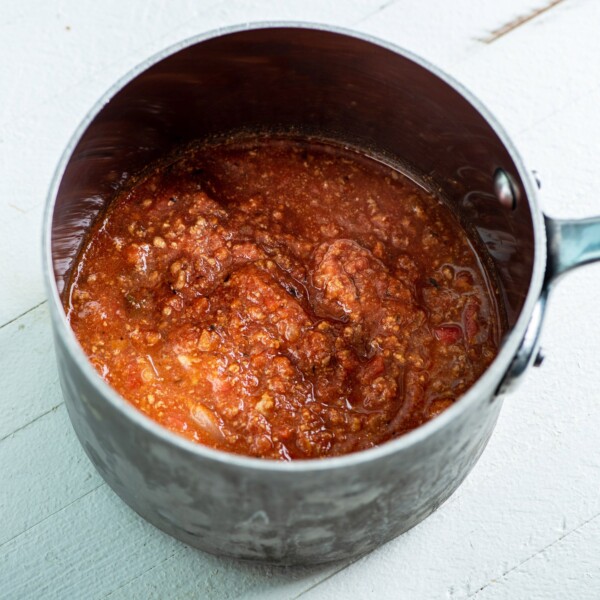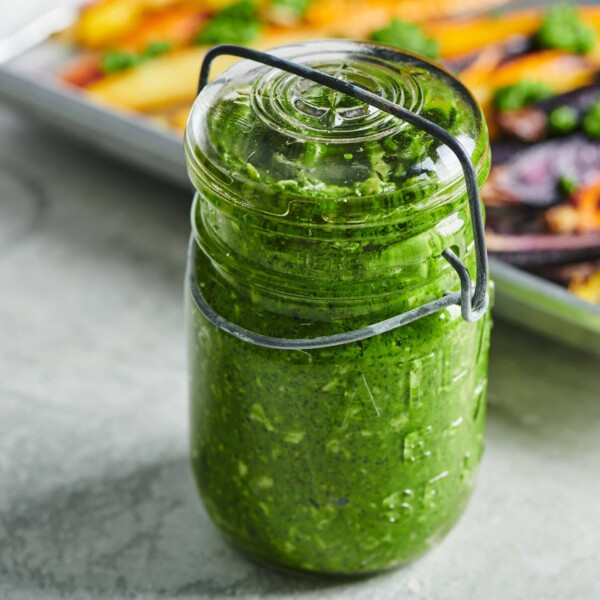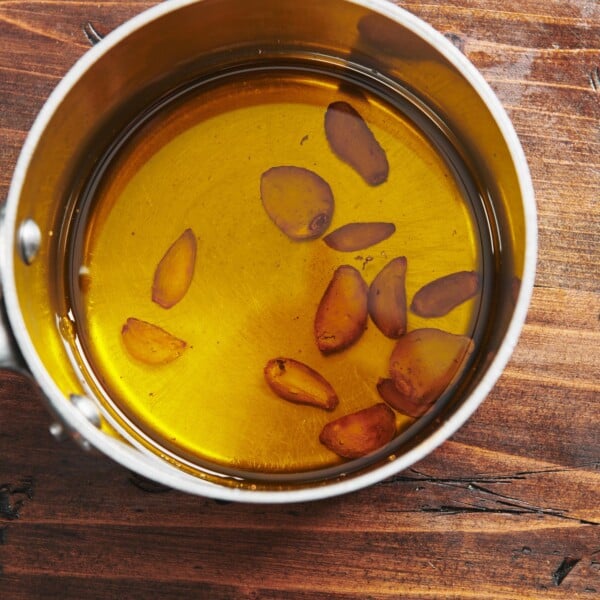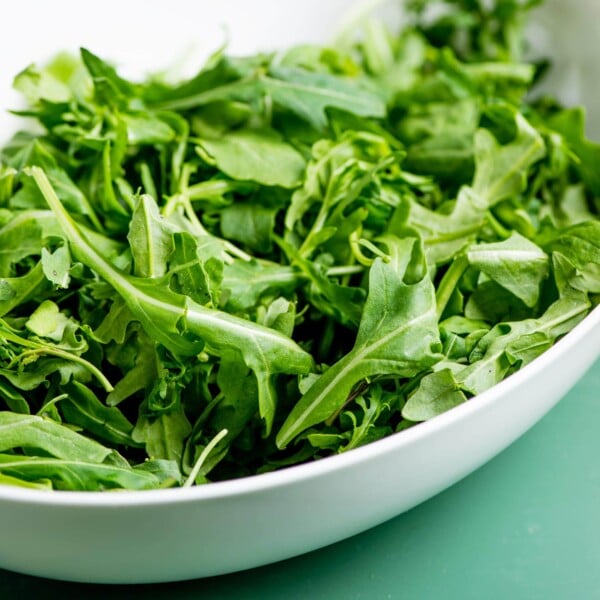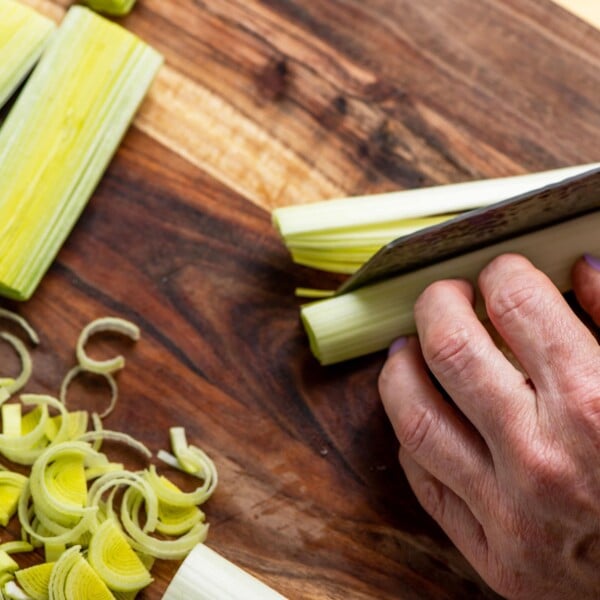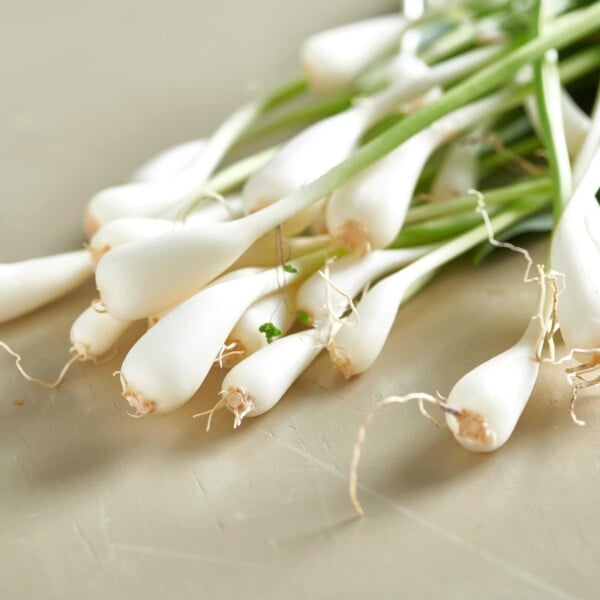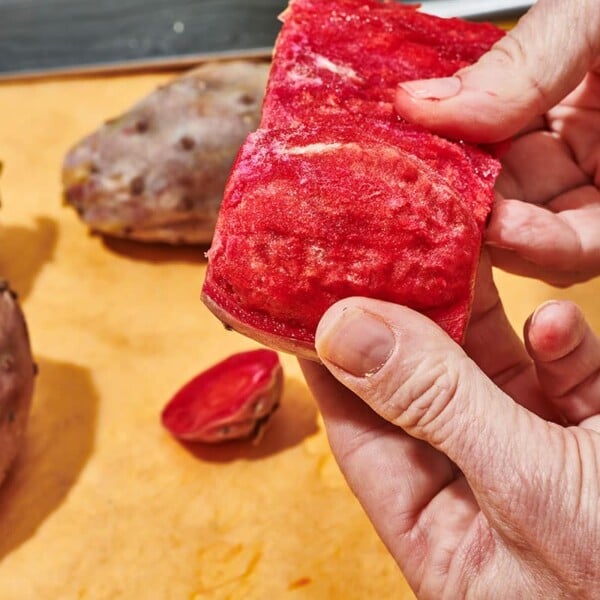How to Cook Spaghetti Squash
on Aug 12, 2020, Updated Nov 21, 2023
This post may contain affiliate links. Please read our disclosure policy.
This is the best way to prepare this versatile winter squash (which, yes, looks much like spaghetti once it's cooked!).
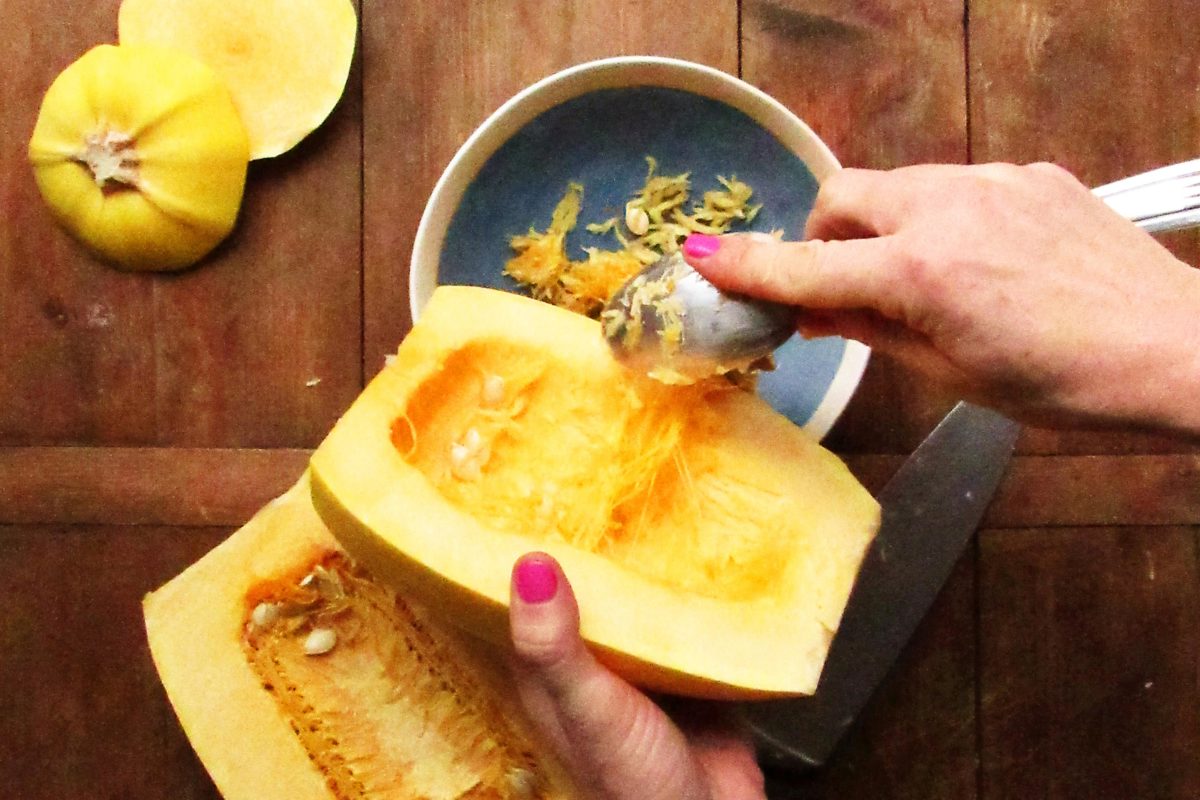
My friend Jenny once emailed me with the subject line, “Spaghetti squash?” The accompanying message was brief: “Never made it before in my life, and tonight’s the night. Any words of wisdom?”
Jenny is certainly not the first person to look at the pale yellow gourd and wonder how exactly to get it to transform itself into golden, silken noodley strands. For those who are looking to lighten up on the carbs or in search of gluten-free alternatives to pasta, spaghetti squash can be quite a discovery…though I hasten to add that while it becomes spaghetti-like in shape, it really doesn’t resemble pasta in texture or taste.
Still, it has a lovely (albeit bland) buttery flavor, is filled with nutrition, and is just plain fun to make as well. If you have kids, this is just the most perfect kitchen project. It’s like a vegetable decided how to spiralize itself! You can also cook the squash in the microwave, but I’m a fan of roasting.
Toss the cooked spaghetti squash with meat sauce, bolognese sauce, garlic oil, or tomato sauce.
Table of Contents
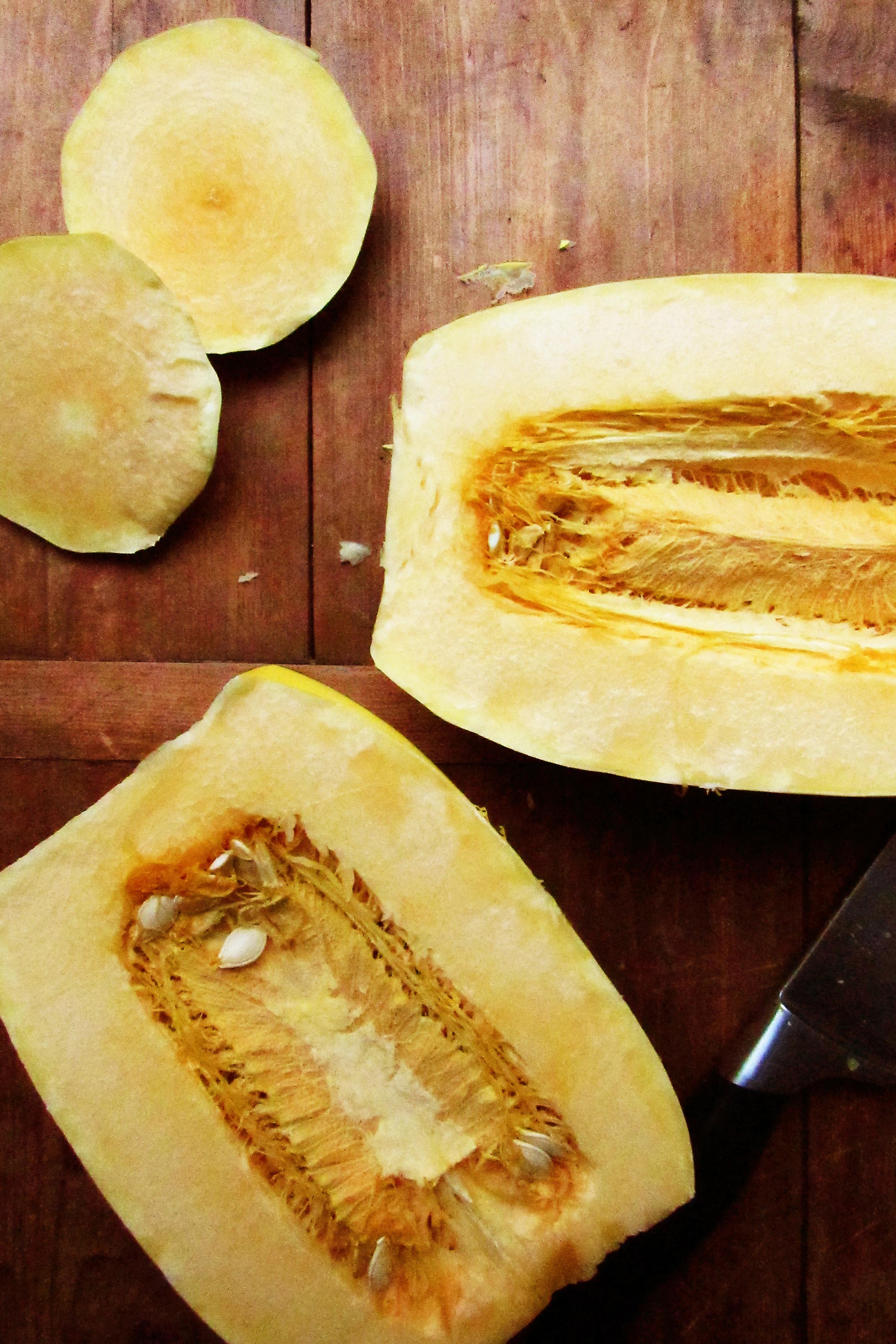
What Is Spaghetti Squash?
Spaghetti squash is a member of the winter squash family. They’re oval in shape, and they range in size from quite large to small. There are lots of seeds inside, and the thick flesh is firm when raw. But when cooked, it falls apart into spaghetti-like strands. (Hence the name.)
What Does Spaghetti Squash Look Like?
You’ll find spaghetti squash sold in its gourd form, a yellow, oblong squash. When it’s cut open and roasted, you can rake a fork against the interior walls and come out with thin strands of squash that look an awful lot like spaghetti.
How to Cook Spaghetti Squash: The best way to prepare this versatile winter squash with step by step photos (and yes, it looks much like spaghetti once it’s cooked!)
Tweet This
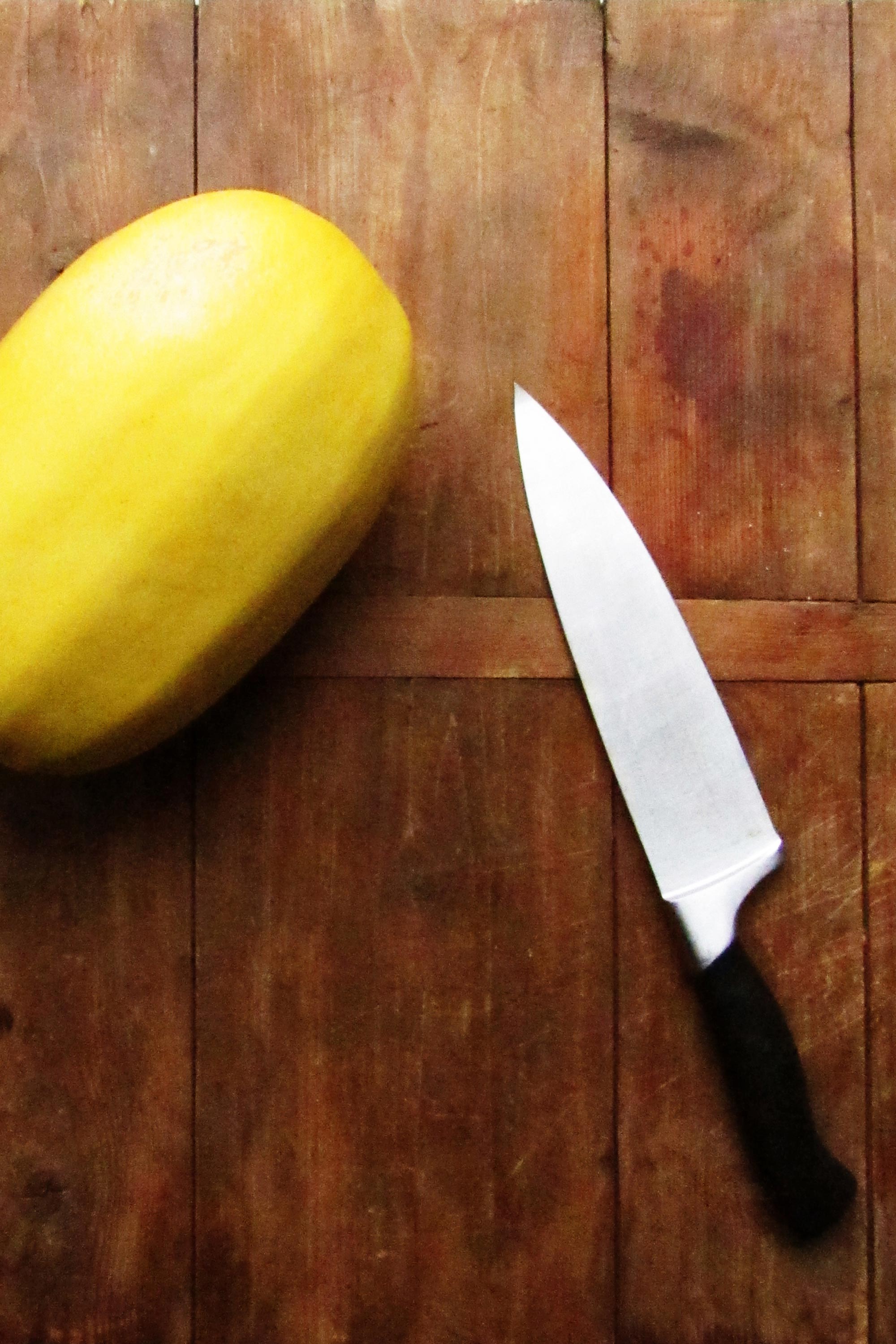
What Does Spaghetti Squash Taste Like?
The flavor of spaghetti squash is actually quite neutral. It’s naturally a little buttery, but that’s all this gourd offers in terms of flavor. That means it’s up to you to decide if you want to go easy on the seasonings so you can taste the squash or use it as a vehicle for a more fully seasoned sauce or ragu of some sort. But first, let’s get that squash to turn into spaghetti.
How to Prepare Spaghetti Squash
- Remove ends: First, cut the ends off the spaghetti squash using a heavy knife, rocking it back and forth with control. Cutting off the ends helps stabilize the squash so you have more leverage and stability, which makes it safer to cut the squash in half lengthwise.
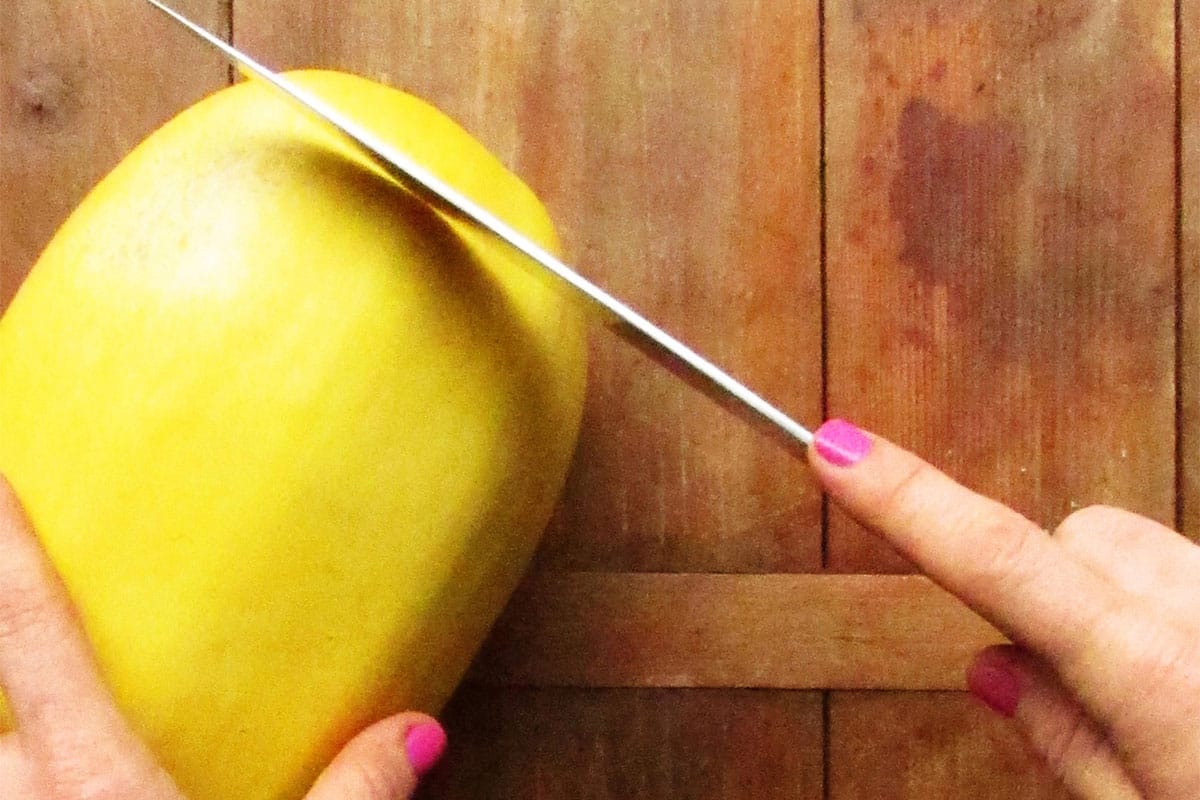
- Cut it in half lengthwise: Turn the squash onto one of its flat sides, then cut a notch midway into the top. Stabilize the squash with your non-knife hand, like below, and guide the knife through the rest of the gourd length-wise, rocking it back and forth to cut all the way through.
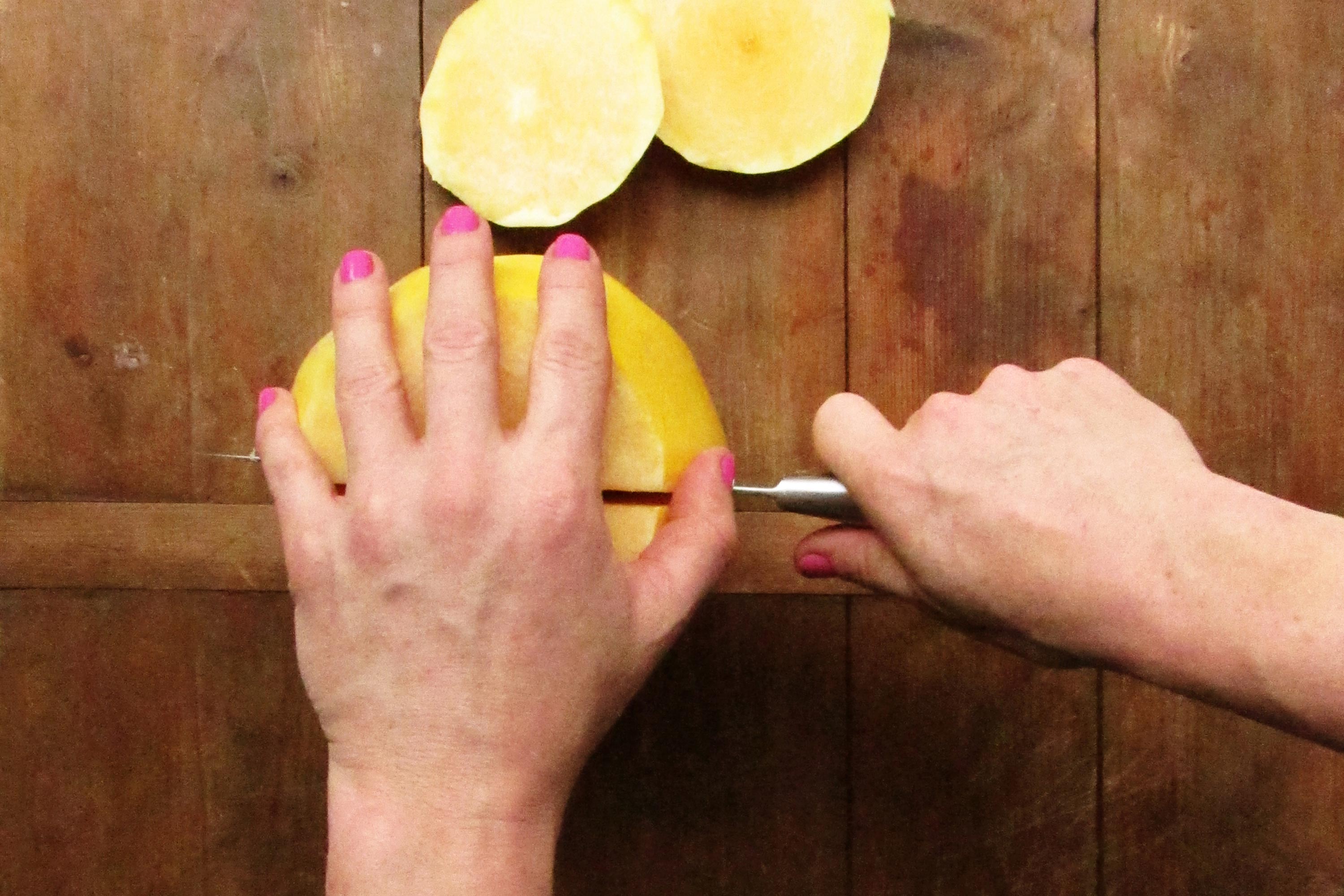
- Scrape out seeds: Scrape out the seeds and any pulpy strings with a spoon. Just like most winter squashes, the inside is hollow, filled with seeds and some stringy fibers; you can roast the seeds like pumpkin seeds if you wish.
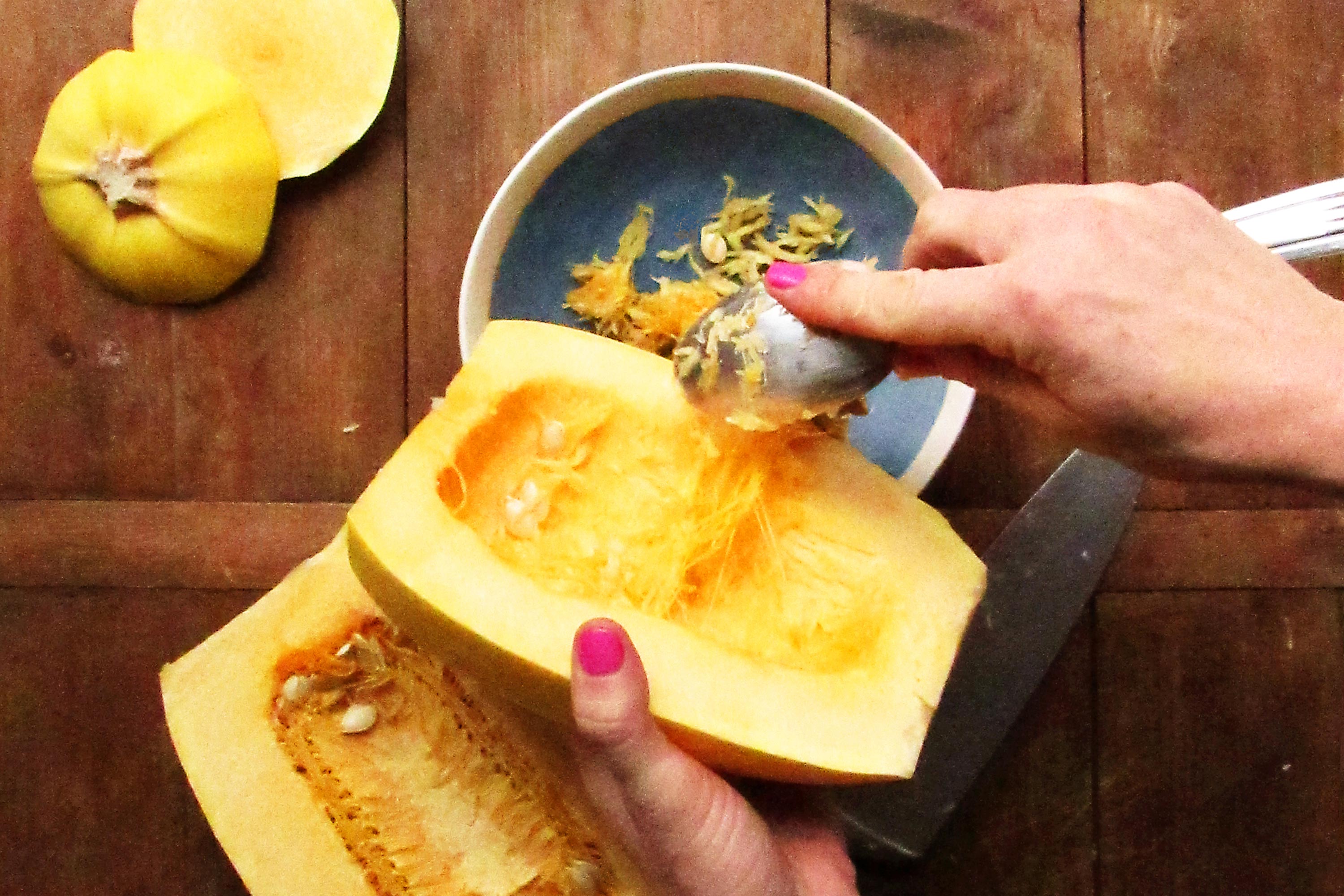
- Roast: Place the halves cut side down in a 9-by-13-inch baking pan. Add ¾ cup of water, and roast in a preheated 400-degree oven for 45 to 55 minutes. The halves should look somewhat browned, wrinkly, and slightly collapsed, and the squash will be tender. Check as the cooking time gets towards the end to make sure there is still a bit of water in the pan, adding more if necessary.
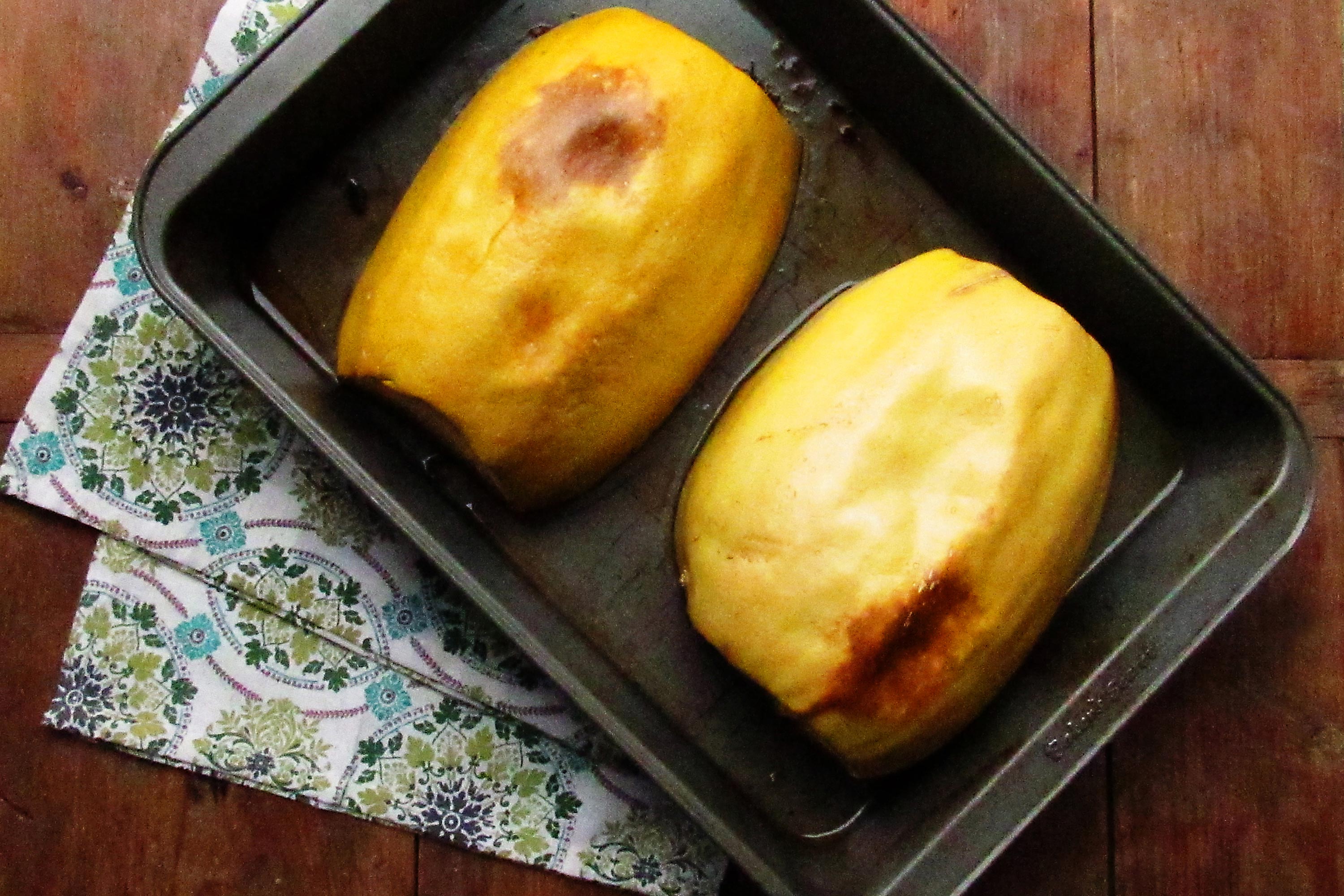
- Cool: Remove the squash from the oven and allow it to cool for about 15 minutes.
- Make spaghetti: Using a fork, scrape, scrape, scrape the inside of the squash to release the insides from the skin. You may want to hold the squash with a dishtowel as it will still be quite hot. You’ll see the squash form spaghetti-like strands as you do this; it’s pretty cool. Transfer all of the squash to a serving bowl (or individual bowls), then use it or top it as you wish. Toss the outside shells.
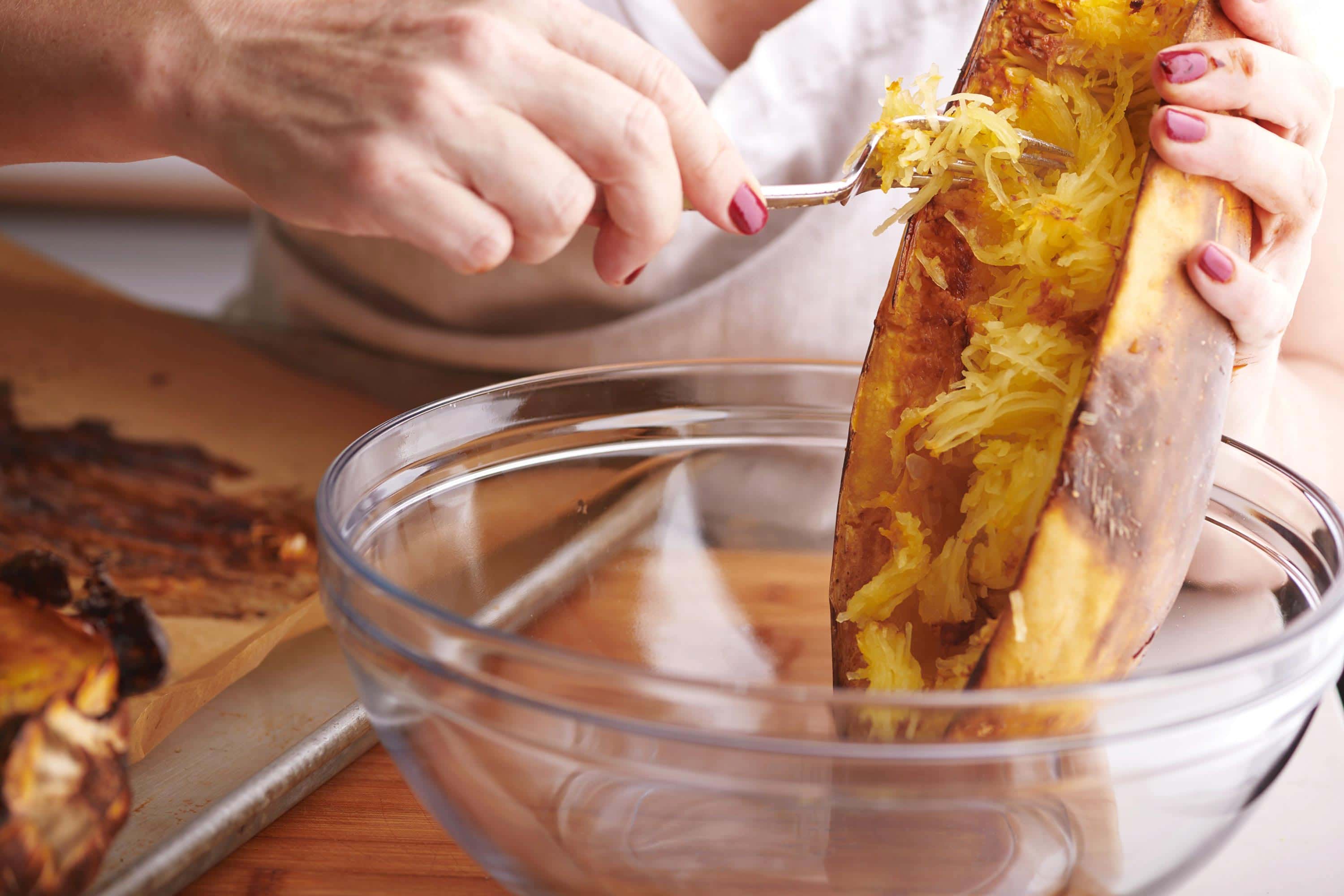
FAQs
Look for even color all over the gourd, with no dings, cuts, or dark spots. And pick it up — you’re looking for a squash that feels heavy for its size, meaning there is a lot of firm flesh inside.
This gourd is actually great for you! It’s high in vitamins, minerals and antioxidants while being low in calories. It’s a great alternative to pasta. A cup of cooked spaghetti squash contains about 49 calories and 2 grams of fiber, according to the USDA.
What to Serve With Spaghetti Squash
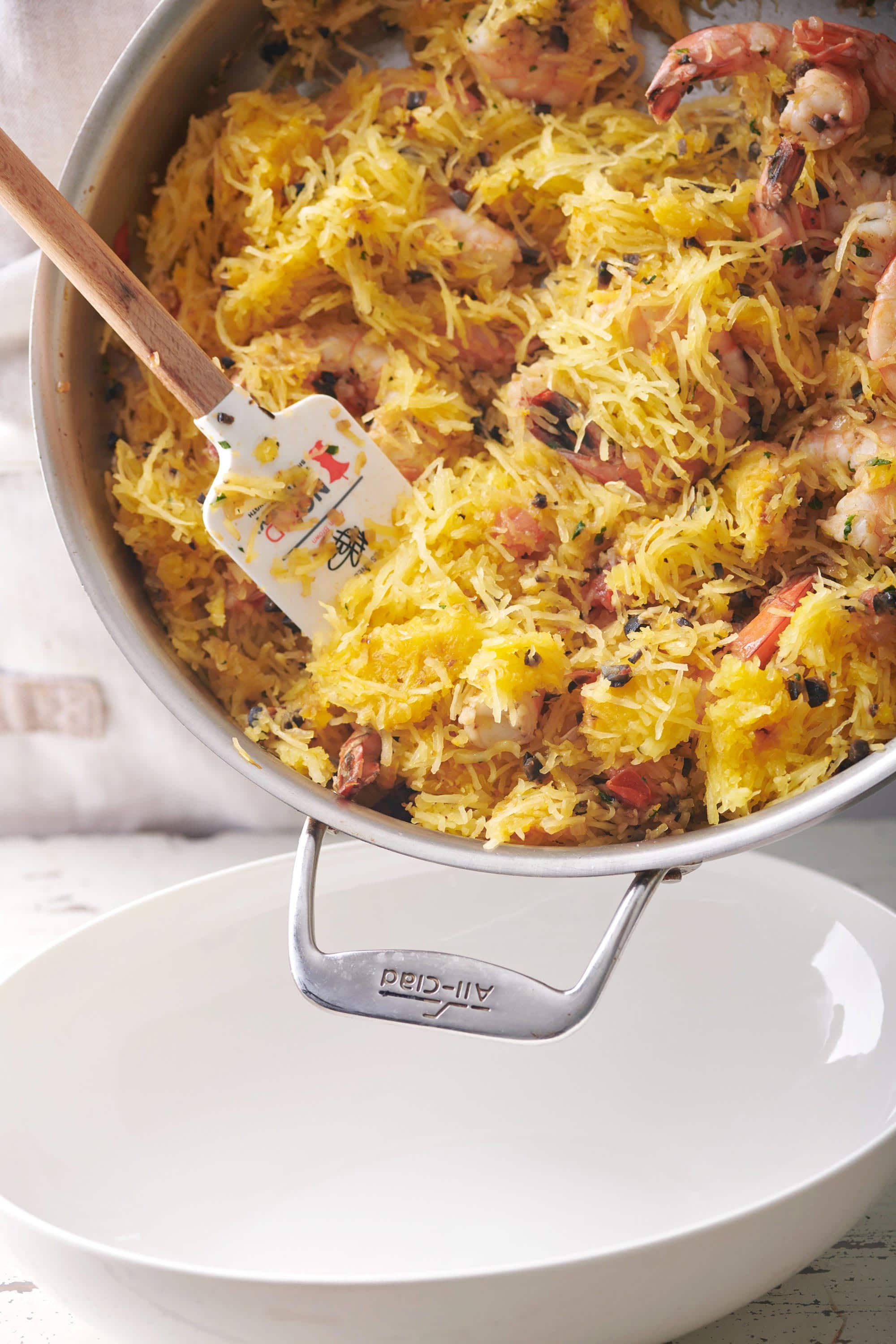
Pin this now to find it later
Pin It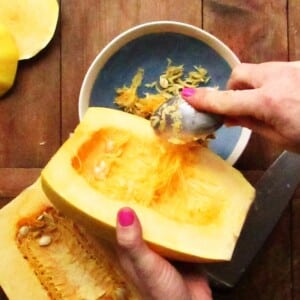
How to Cook Spaghetti Squash
Equipment
- 1 9×13-inch baking pan
Ingredients
- 1 spaghetti squash
- ¾ cup water
Instructions
- Preheat the oven to 400 degrees.
- First, cut the ends off the spaghetti squash using a heavy knife, rocking it back and forth with control. Cutting off the ends helps stabilize the squash so you have more leverage and stability, which makes it safer to cut the squash in half lengthwise.
- Turn the squash onto one of its flat sides, then cut a notch midway into the top. Stabilize the squash with your non-knife hand, like below, and guide the knife through the rest of the gourd length-wise.
- Scrape out the seeds and any pulpy strings with a spoon. Just like most winter squashes, the inside is hollow, filled with seeds and some stringy fibers; you can roast the seeds like pumpkin seeds if you wish.
- Place the halves cut side down in a 9×13-inch baking pan, add ¾ cup of water, and roast for 45 to 55 minutes until the halves look somewhat wrinkly and slightly collapsed, and the squash itself is tender. Check as the cooking time gets towards the end to make sure there is still a bit of water in the pan, adding more if necessary.
- Remove the squash from the oven and allow to cool about 15 minutes.
- Using a fork, scrape, scrape, scrape the inside of the squash to release the insides from the skin (you may want to hold the squash with a dishtowel as it will still be quite hot. You’ll see the squash form spaghetti-like strands as you do this; it’s pretty cool. Transfer all of the squash to a serving bowl (or individual bowls), then use it or top it as you wish. Toss the outside shells.
